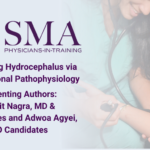Abstract | May 4, 2021
Rethinking Hydrocephalus via Interventional Pathophysiology
Hydrocephalus is a condition affecting 3 per 1000 live births. However, despite the advancement in the research arena, its clinicaltreatment remains primitive primarily dictated by the oversimplified etiological understanding of this condition. Indeed, novel ideasregarding the ventriculomegaly lack cellular and molecular foundation. The goal of this presentation is to explore hydrocephalustreatment via traditional and modern interventional approaches, imposed primarily by etiology. Clinical approaches predominantlyinvolve surgery with the placement of a shunt. Some altered forms of this have been introduced considering the role of choroid plexusproducing Cerebrospinal Fluid (CSF). Additionally, pharmacological approaches can be utilized to decrease the amount of fluid buildupin the brain ventricular system. We will focus on highlighting some experimental models that have been utilized i.e. the kaolin model,HTx rat mutation genetic model, to test various therapeutic agents. Exploring alternative treatments will allow us to move away fromtraditional methods of treatment. This will begin justifying different avenues to take a novel innovative treatment approach based on theetiological pathophysiology of hydrocephalus.
Learning Objectives
To learn about
– the condition of hydrocephalus and its classification
-understanding its treatment
-what is available to know about it in research world via research model
-new way of thinking about it
-how this new

